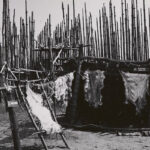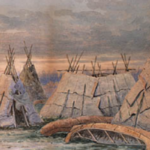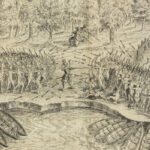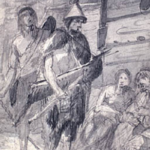Whitecap Dakota First Nation: A Story of Resilience, Diplomacy, and Renewal
The Whitecap Dakota First Nation, part of the Dakota Oyate (Sioux Nation), has a long and intricate history rooted in the Great Plains of North America. Located south of Saskatoon, Saskatchewan, this First Nation has been a symbol of resilience, cultural pride, and diplomacy. The Whitecap Dakota First Nation has played a pivotal role in the history of the prairies, navigating the profound changes brought by European settlement while maintaining their traditions and forging a modern identity.
Ancient Origins: The Dakota Oyate
The Dakota Oyate, to which the Whitecap Dakota First Nation belongs, are part of the larger Siouxan-speaking peoples whose ancestral lands span the Great Plains, extending from present-day Canada into the United States. For centuries, the Dakota followed a semi-nomadic lifestyle, centered on the buffalo, which provided food, clothing, tools, and spiritual significance. Their extensive knowledge of the plains allowed them to thrive in the region’s diverse ecosystems.
The Dakota people are often referred to as the “Allies,” reflecting their traditional alliances with other Indigenous nations, including the Cree and Assiniboine. These partnerships were vital for trade, mutual defense, and cultural exchange.
Anthropologist James Howard, in The Plains Sioux and Assiniboine, writes, “The Dakota people were not only skilled hunters and warriors but also diplomats and traders, whose networks extended across the vast North American plains.”
The Leadership of Chief Whitecap
The Whitecap Dakota First Nation takes its name from Chief Wapahaska (Whitecap), a respected leader known for his wisdom, diplomacy, and commitment to his people. Born in the early 19th century, Chief Whitecap led his community during a time of immense upheaval as European settlers began to encroach on Indigenous territories.
Chief Whitecap is perhaps best known for his role in guiding settlement in what is now Saskatoon. In 1882, he advised John Lake, a Methodist minister and leader of the Temperance Colonization Society, on the location for a new settlement along the South Saskatchewan River. This collaboration laid the groundwork for the city of Saskatoon, demonstrating Whitecap’s foresight and willingness to foster peaceful relations.
Historian Sarah Carter, in Lost Harvests: Prairie Indian Reserve Farmers and Government Policy, observes, “Chief Whitecap exemplified the qualities of leadership most valued by the Dakota people: courage, vision, and a commitment to the well-being of his community.”
Governance and Social Structure
The Dakota people followed a governance system rooted in consensus and collective decision-making. Chiefs and councils were chosen for their ability to lead with wisdom, fairness, and courage. Elders played a central role in guiding decisions, sharing their knowledge of traditions, and preserving the community’s oral history.
The Whitecap Dakota were organized into kinship-based bands, each responsible for managing specific resources and territories. Seasonal gatherings provided opportunities for ceremonies, feasts, and social bonding, reinforcing cultural identity and cohesion.
First Contact with Europeans and Fur Trade Networks
The Dakota people’s first interactions with Europeans occurred during the fur trade era in the 17th and 18th centuries. They became key players in the trade networks that connected the northern plains to European markets. The Dakota exchanged furs, bison hides, and pemmican for goods such as firearms, metal tools, and textiles.
These trade networks also brought new challenges, including competition for resources and the introduction of European diseases such as smallpox, which devastated Indigenous populations. Anthropologist Bruce Trigger, in Indigenous Peoples of Canada, describes these epidemics as “a demographic disaster that reshaped the social and cultural landscapes of Indigenous nations.”
The Dakota in Canada: Refuge and Resilience
The Whitecap Dakota’s ancestors arrived in present-day Canada in the mid-19th century as refugees from the United States. Following the Dakota-U.S. War of 1862, also known as the Sioux Uprising, many Dakota people fled to Canada to escape persecution and conflict with the U.S. government. Chief Whitecap and his followers sought refuge in the northern plains, where they established their community along the South Saskatchewan River.
This migration was a period of profound disruption, as the Dakota had to adapt to a new environment while maintaining their cultural practices and identity. Historian Margaret Conrad, in A Concise History of Canada, notes, “The migration of the Dakota people to Canada underscores their resilience and determination to preserve their way of life in the face of adversity.”
Treaty Exclusion and Land Dispossession
Unlike many other Indigenous nations in Saskatchewan, the Dakota were excluded from the numbered treaties negotiated between the Canadian government and Indigenous peoples in the late 19th century. The government argued that the Dakota were not “original inhabitants” of Canada, despite their long-standing presence on the northern plains.
This exclusion had significant consequences for the Whitecap Dakota First Nation. They were denied the rights and benefits guaranteed under treaties, including access to land, education, and healthcare. Despite these challenges, Chief Whitecap successfully secured a reserve for his community, now known as Whitecap Dakota First Nation, through his leadership and negotiations.
The North-West Resistance of 1885
The Whitecap Dakota played a notable role in the North-West Resistance of 1885, a conflict led by Métis leader Louis Riel and Indigenous leaders such as Poundmaker and Big Bear. Chief Whitecap was accused of supporting the resistance, though evidence suggests his involvement was limited to protecting his community’s interests and maintaining peace.
In the aftermath of the resistance, Chief Whitecap was arrested and tried for treason, but he was acquitted due to a lack of evidence. This episode highlights the precarious position of Indigenous leaders navigating the tensions between their communities and the Canadian government.
Resilience Through Colonization
Despite the challenges of exclusion from treaties, land dispossession, and systemic marginalization, the Whitecap Dakota First Nation maintained their cultural identity and traditions. Ceremonies such as the Sun Dance and sweat lodge continued, and elders passed down stories, songs, and teachings to preserve Dakota heritage.
The community also embraced farming and other economic initiatives, adapting to the changing landscape while asserting their rights and sovereignty. The construction of roads, schools, and community centers reflected their commitment to building a sustainable future.
Modern Resurgence and Cultural Revitalization
In recent decades, the Whitecap Dakota First Nation has emerged as a leader in cultural revitalization and economic development. Efforts to preserve the Dakota language and restore traditional ceremonies have been central to their resurgence. Educational programs, cultural workshops, and partnerships with universities ensure that future generations remain connected to their heritage.
The Whitecap Dakota have also become leaders in economic innovation. The development of the Dakota Dunes Resort and Casino has created jobs and opportunities for the community, while renewable energy projects reflect their commitment to sustainability.
Chief Darcy Bear, a long-serving leader of the Whitecap Dakota, has emphasized the importance of reclaiming their history and building a brighter future. In a 2021 interview with CBC News, Chief Bear stated, “Our ancestors’ strength and vision guide us. We honour their legacy by creating opportunities for our people and preserving our culture.”
Environmental Stewardship
The Whitecap Dakota First Nation has long been a steward of the South Saskatchewan River Valley, emphasizing sustainable resource management and environmental conservation. Traditional ecological knowledge guides their practices in land management, agriculture, and renewable energy initiatives.
In The Resettlement of British Columbia, historian Cole Harris notes, “The Whitecap Dakota’s approach to environmental stewardship reflects their deep understanding of the interconnectedness of cultural and ecological health.”
Whitecap Dakota First Nation Today
Today, the Whitecap Dakota First Nation is a thriving community that blends traditional practices with modern governance and economic development. Their leadership in education, cultural preservation, and economic innovation underscores their commitment to self-determination.
Annual cultural events, such as the Whitecap Dakota Days, celebrate their heritage and provide opportunities for community members and visitors to engage with Dakota traditions. Partnerships with local and federal governments reflect their dedication to reconciliation and nation-building.
A Legacy of Diplomacy and Resilience
The history of the Whitecap Dakota First Nation is a testament to their resilience, adaptability, and deep connection to the land. From their ancient stewardship of the plains to their leadership in modern economic and cultural initiatives, the Whitecap Dakota have preserved their identity and place within the dynamic landscapes of Saskatchewan.
As Chief Darcy Bear stated, “Our story is one of strength, diplomacy, and pride. We honour our past while shaping a future that reflects our values and vision for generations to come.”
References
- Howard, James H. The Plains Sioux and Assiniboine. University of Oklahoma Press, 1965.
- Conrad, Margaret. A Concise History of Canada. Cambridge University Press, 2012.
- Carter, Sarah. Lost Harvests: Prairie Indian Reserve Farmers and Government Policy. McGill-Queen’s University Press, 1990.
- Ignace, Marianne and Ronald E. Ignace. Keeping the Stories Alive: Language, Land, and Culture in Indigenous Communities. University of Toronto Press, 2008.
- Harris, Cole. The Resettlement of British Columbia: Essays on Colonialism and Geographical Change. UBC Press, 1997.
- Bear, Darcy. “Reclaiming Whitecap’s Legacy.” CBC News, 2021.
- Trigger, Bruce G. Indigenous Peoples of Canada. McGill-Queen’s University Press, 1992.
- Whitecap Dakota First Nation. Guardians of the Plains: The History and Culture of Whitecap Dakota. Whitecap Publications, 2015.
- Treaty Relations Commission of Manitoba. The Dakota Presence in Canada. University of Manitoba Press, 2018.
- Wuttunee, William. Ruffled Feathers: Indigenous Sovereignty in Canada. University of Regina Press, 1971.



